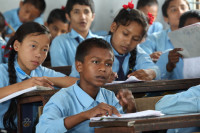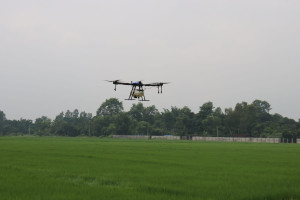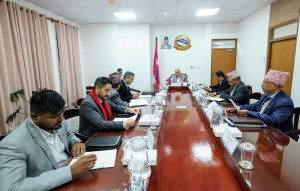Opinion
The price of justice
With effectual and reliable investigation mechanisms in place, cases like Nirmala Pant’s would be a lot less in number
Sakun Bhandari
Tampering with evidence is a morally heinous crime. It is an act with which an individual attempts to conceal, falsify or even destroy physical evidence that could be crucial to an investigation. This intent to obstruct justice is a criminal offense that is punishable by law.
The country is currently caught deep in the throes of the tragic death of Nirmala Pant, who was brutally raped and murdered. However, it is more appalled by the justice system’s apathy and apparent lack of proper justice.
A justice system, or a government for that matter, such as ours, which allows authorities to unjustly tamper with evidence, lets such acts go unchecked and unpunished, and proceeds to protect the ‘socially and politically’ powerful while incriminating the less-privileged others, as in Pant’s case, goes on to show how prejudiced and impotent our political structures are. The details the Nirmala Pant case uncovered has led us to ask one big question: if our country’s law enforcement mechanisms are not created to seek justice for the victimised, then where do people go for answers?
The brutal rape-and-murder case of 13-year-old Nirmala Pant has left the Nepali people traumatised. Unfortunately, she is not the only victim of such cruel acts. Every day one reads of rape cases in the country. Recent statistical data show that almost every month, around 33 rape cases are reported in different provinces of Nepal. And the victims are usually girls that come under the 10-15 age group. At dark times such as these, how can the government on its part ensure that the women, who constitute more than half of the total populace, in the country feel safe?
The first step is to create a strong investigative legal system. Victims are more victimised when heinous crimes are ignored and manipulated under the influence of nepotism and politicisation. To ensure that a just system is in place, acquiring a forensic investigation team with qualified, well-trained experts is the first step.
Often times, rape victims are murdered so that chances of them identifying the culprit dies with them. Most rape cases lack eye-witnesses as well, which make it difficult to indict culprits. However, if forensic and non-forensic physical evidence, such as fingerprints, DNA analysis of biological fluids like semen, blood stains, hair, saliva and nails are analysed by a competent forensic team then justice will eventually prevail.
The second step is to provide investigating bodies the adequate infrastructure with trained human resources. Forensic laboratories for gathering, documenting and analysing biological samples such as DNA and physical evidence are inadequate in our investigative system. There are only two forensic laboratories in Nepal, both inside the Kathmandu Valley, which receive samples very late. Many samples are contaminated because they are handled by untrained professionals, in poor storage facilities. Specific categorisation and authorisation have also not been given to medical institutes to study forensic investigations of sexual assaults cases.
There also aren’t many medico-legal experts as well other forensic experts, trained police, sexual assault nurses, and psychoanalysts available in the state. There aren’t many trained healthcare professionals to collect and document evidence, treat injuries, prevent transmitted diseases and pregnancy, provide psychiatric counselling with sexual assault crisis centre (SACC), professional trained, ‘public emergency response system (PERS), and specialised Sexual Assault Treatment Units (SATUs) as well.
The third and most important step is to educate the people about rapes .Rape threat starts from home. One hears many instances of sexual assaults being committed by family, and people close to victims. These cases increase in number if we become passively accepting female degradation, victim-blaming and hyper-masculinity in our communities. A patriarchal culture, unequal power relations and conservative institutional thoughts, gender inequality, the objectification of women, and models of manhood that promote dominance over women and sexual entitlement has made the situation and matter worse in society. To change this culture, changing the mindsets of people is most necessary. Another big step that needs to be done is to educate communities, especially lobby schools and college administrations, to create safer zones for our girls.
Women safety begins from home and our societies. Parents should teach their children equality among genders and to respect women. The government should incorporate rape prevention and education programmes in the school curriculum, for educating children about rape through the school curriculum instils in students a rape consciousness that can bring cognitive, emotional and behavioural changes.
Such measures should bring about a change in the mindsets of the people. And if the government too started providing effective, effectual and reliable investigation mechanisms, with proper formulation and foundation, to investigate policies, guidelines and in-fractures, then cases like Nirmala Pant’s would be a lot less in number, and it would get the answers it deserves.




 13.12°C Kathmandu
13.12°C Kathmandu










